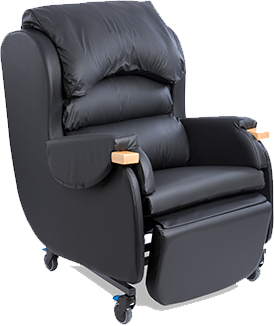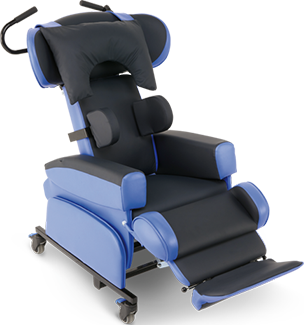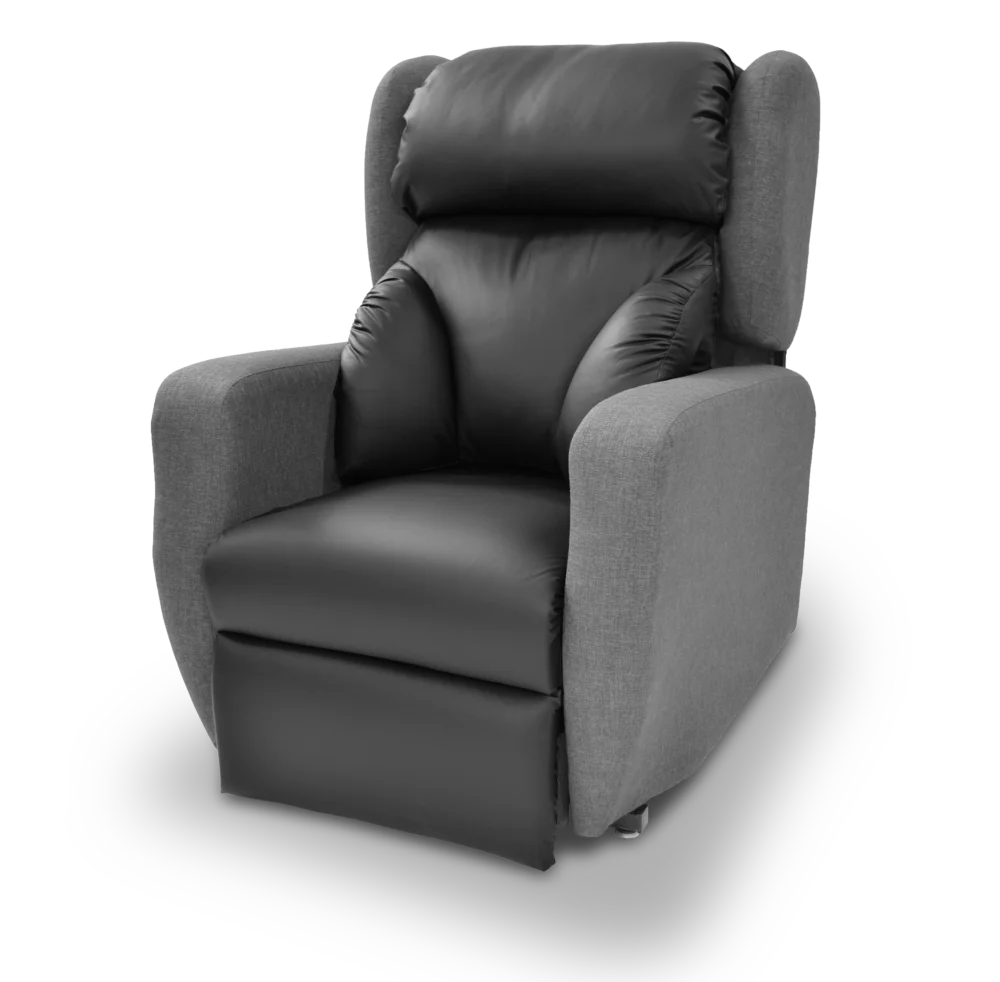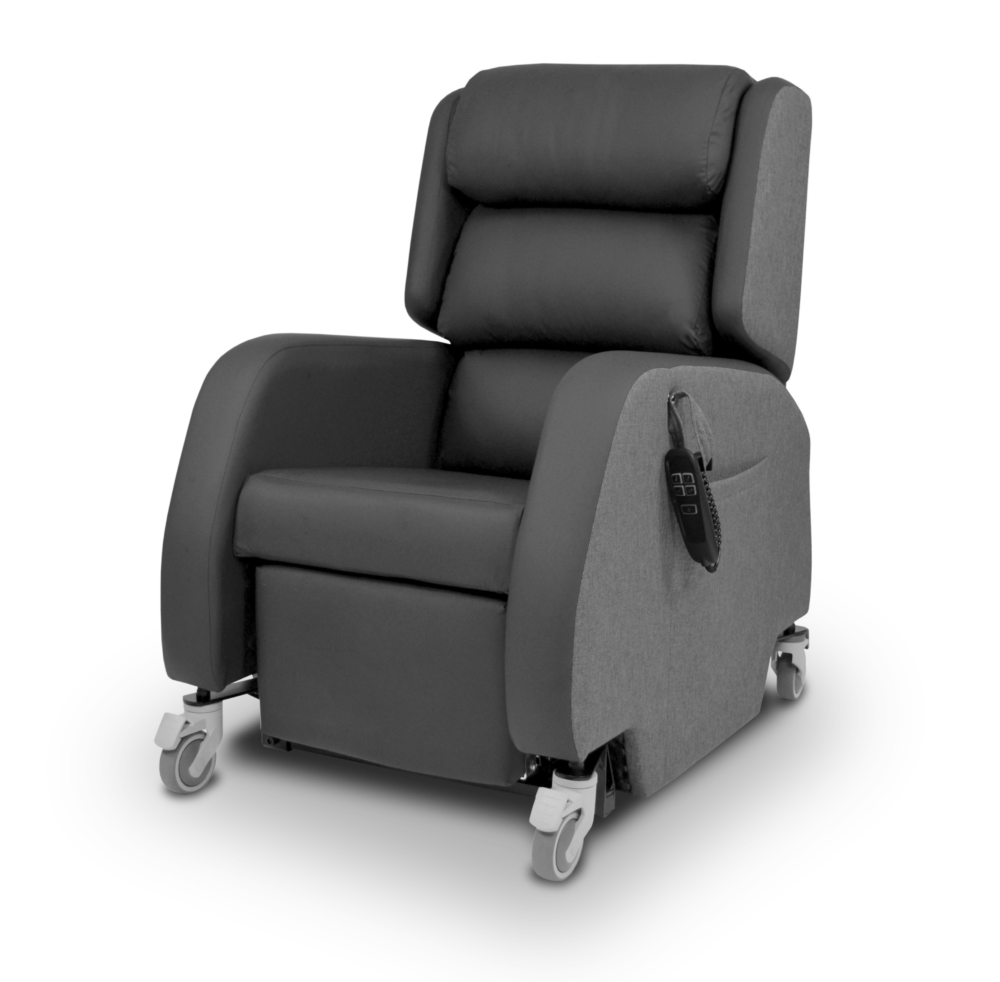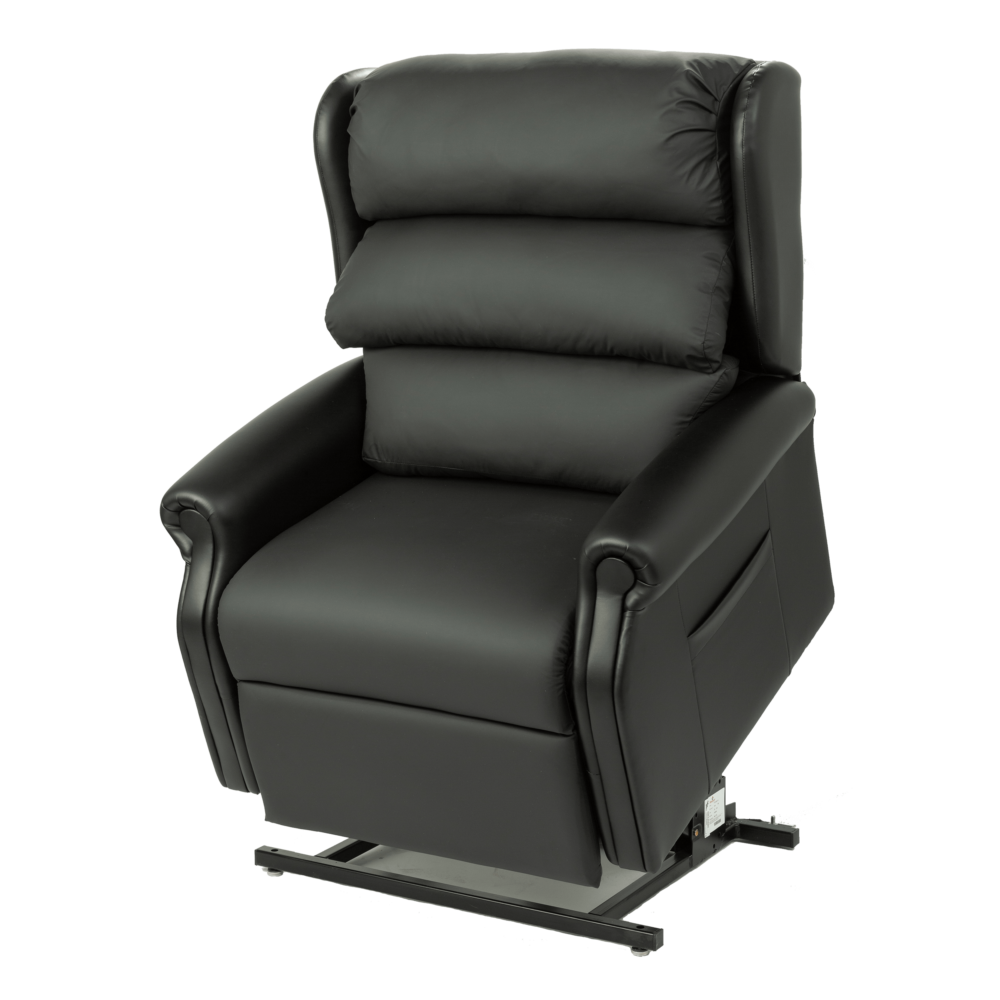What is a posterior pelvic tilt?
A posterior pelvic tilt is when an individual presents with sacral sitting, with the anterior superior iliac spines higher than the posterior superior iliac spines.
This postural challenge can be associated with an increased thoracic kyphosis, cervical spine hyperextension by trying to maintain a functional visual field, a tendency to slide forward in the seat and increased risk of pressure injuries over the sacrum and the apex of a kyphotic spine.
What are the causes?
- Incorrect seat dimensions
- Pelvic instability
- Fatigue
- Limited hip flexion
- Tight hamstring muscles
- Weak abdominals/ back extensors
- Abnormal muscle tone
- Lack of adequate foot support
Are there any seating solutions that can help?
Management will depend on whether the posterior pelvic tilt is correctable or if it is fixed, which can be identified during a comprehensive assessment. The aim is to support the pelvis in all planes of movement; the pelvis is the foundation to a stable sitting posture as it dictates what happens to the body above and below. Seating solutions include:
- Ensuring correct seat depth and seat height
- A ramped base or tilt-in-space, if appropriate, to encourage pelvic stability and energy management. A pelvic belt, following a risk assessment, can also be considered
- Setting the back angle according to hip range of movement
- A contoured back to support the shape of the spine
- Ensuring appropriately positioned foot support
- Ensuring appropriate use of elevating leg rest according to hamstring muscles length
- Addressing any originating or resulting increased thoracic kyphosis



